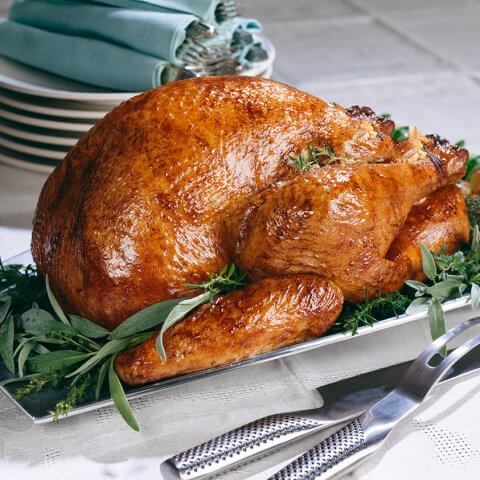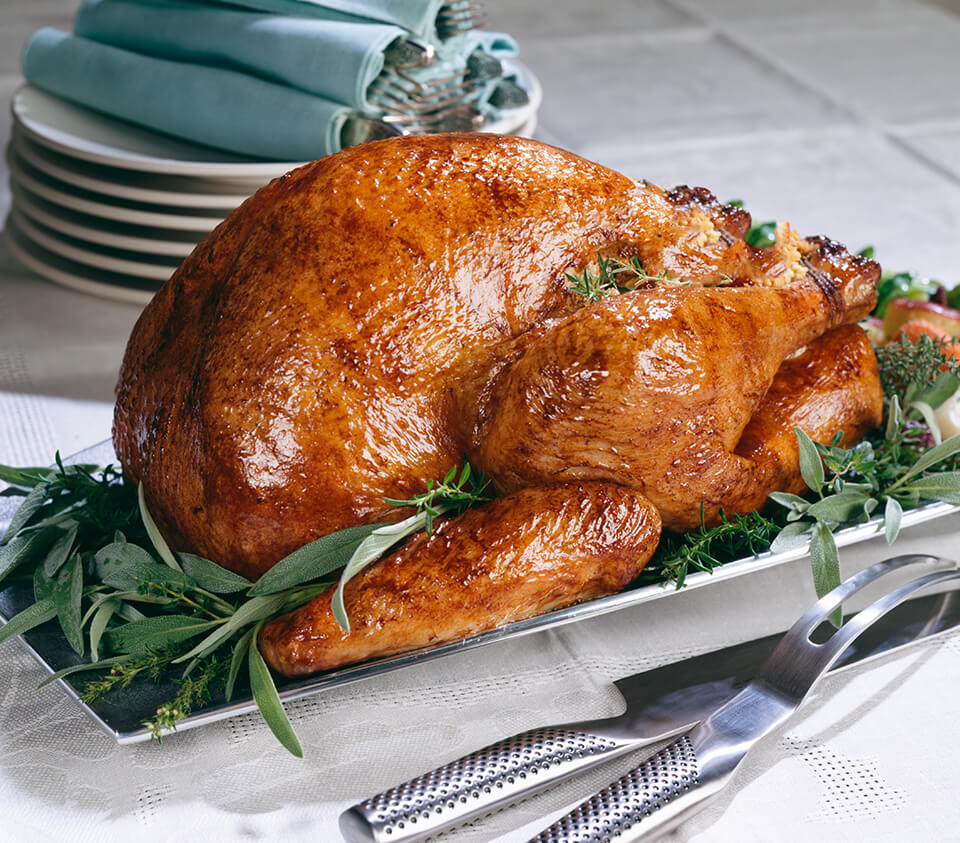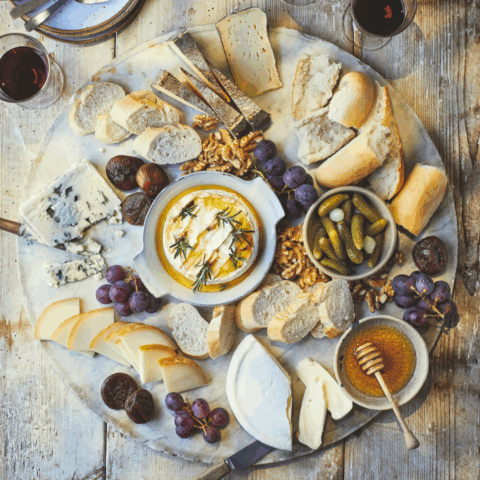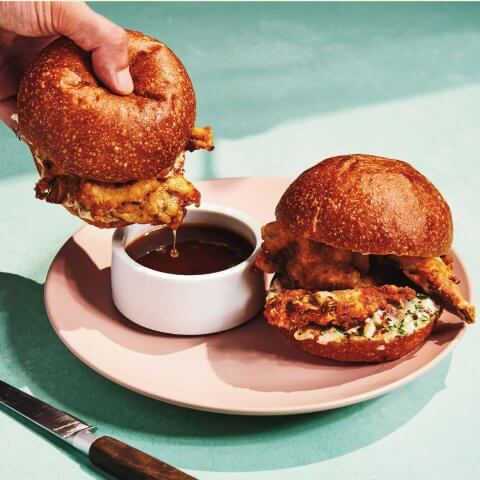The Naramata Inn in South Okanagan, B.C., uses fragrant wild sage as the star of their oven-roasted turkey. First, the bird is brined with herbs, then rubbed with a butter-sage mixture prior to roasting. “Brining your turkey makes it juicy and delicious, and it also makes the pan drippings taste amazing,” notes executive chef Ned Bell. To elevate them further, “[try roasting] your turkey over onions, carrots and celery. When it comes out of the oven, drain the drippings into a pot. Skim off the fat, add your favourite thickener and get an extra-delicious pan gravy,” he suggests. Cut the measurements in half to adapt the recipe for roasted chicken.

Roasted Turkey With Wild Sage
Chef Ned Bell's formula for the perfect turkey, brined and roasted with wild sage and thyme.
Ingredients
- 12-20 lb organic free-run turkey or chicken
- 1 cup kosher salt
- ½ cup organic apple cider vinegar
- 3 tbsp brown sugar or organic cane sugar
- 4 bay leaves
- ¼ cup black peppercorns
- 8 sprigs thyme
- 5 cloves garlic
- 4 sprigs wild sage for brine
- ½ lb butter
- 2 handfuls wild sage
- cooking oil such as canola
- salt
- cracked pepper
Instructions
- Remove the turkey from its packaging and set it in the bottom of a large stock pot or bucket. Make sure there is enough room to cover the turkey with liquid.
- In a pot, combine 4 cups water, kosher salt, apple cider vinegar and sugar. Bring to a boil. Once all of the salt has dissolved, take the pot off the heat. Add 12 cups water and let cool to a lukewarm temperature.
- Crush the garlic and bruise the herbs with the back of a knife, then add them to the brine.
- Once the brine is room temperature (and won’t cook your bird) pour it over the turkey. Be sure the breast and legs are covered, but don’t worry too much if the tips of the legs are uncovered. If the turkey floats, put a clean, heavy plate on top to submerge it.
- Cover the pot with a lid and/or plastic wrap and refrigerate it for 12 to 24 hours. (Keep the turkey in for the full 24 hours to optimize flavour absorption.)
- Take the turkey out of the fridge about 1 hour before you're ready to put it in the oven. (Heat transfers more easily through a room temperature bird, and will give you a more consistent and juicy one.)
- Remove your turkey from the brine, rinse it and set it on a rack to dry. Pat it down with a paper towel so the skin is nice and dry.
- Carefully peel back the skin from the bottom of the turkey breast. You should be able to get your whole hand underneath without tearing it.
- Cut the butter into small cubes and bruise the wild sage with a knife. Combine them in a bowl, then use your hands to carefully spread the mixture under the skin and on top of the breast. Don’t be shy – fat is where the flavour is.
- Brush the turkey with cooking oil and season with salt and pepper. Remember, your turkey has been brined with salt, so you won’t need as much as you think.
- Roast at 385°F, until the skin has become golden. Reduce the heat to 300°F and cook until a digital thermometer inserted into the thickest part of the breast reads 160°F. (I always stick the thermometer between the wing and the breast, so the skin isn't broken). Let cool and rest for at least 30 minutes, then carve.


















